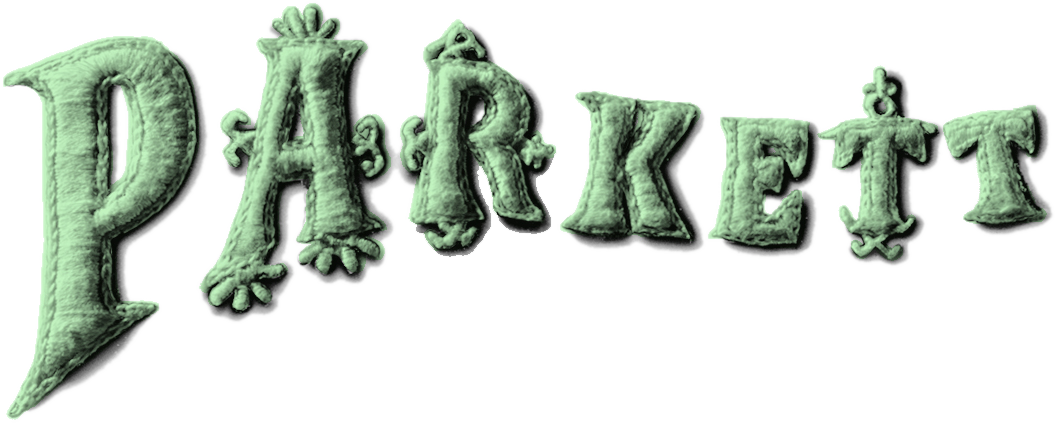Parkett Vol. 68 - 2003 | Franz Ackermann, Eija-Liisa Ahtila, Dan Graham
Franz Ackermann
Read a selected text (PDF)
View edition
Eija-Liisa Ahtila
Read a selected text (PDF)
View edition
Dan Graham
Read a selected text (PDF)
View edition
Insert: Jonathan Monk (PDF)
Spine: Fiona Banner
Cumulus
Panama City exhibition review by Cay Sophie Rabinowitz (PDF)
On Tino Sehgal by Jens Hoffmann (PDF)
U.S. & Canada
Please place your order through our distributor D.A.P. here.
Browse Selected Texts and more on the Collaboration Artists
Artist Insert
Editorial
Studies in the multiple perspectives of several simultaneous vantage points mark the pages of this volume of Parkett with Franz Ackermann, Eija-Liisa Ahtila, and Dan Graham. The aircraft on the cover presages artistic journeys that thoroughly ruffle our ingrained notions of time and space.
The work of Dan Graham, the oldest of the artists presented here, represents a journey in time through the history of artistic reception over the past decades. In the words of Karin Schneider and Nicolás Guagnini, “An atomization of the unified modern subject, a critique of Aristotelian time-space continuity, and a dismantling of Renaissance perspective and its organizing social presence are at the core of Graham’s overall project.” Both Ackermann and Ahtila address similar experiences. However, while Graham’s agenda explicitly involves residents, visitors and users of public, private and semiprivate spaces, human beings do not figure at all in Franz Ackermann’s painting or his vast, colorful installations. Structures, arterial systems, and intercut layers produce a melting pot of hallucinatory forms that at once represent the givens of nature and the products of human culture. Although visible life appears only in abstract form, its presence is evoked all the more intensely as schematized absence.
In contrast, people lie at the heart of Eija-Liisa Ahtila’s oeuvre, which posits between them a mental space of kaleidoscopic, protean proportions. When the term “borderline” appears, as in Taru Elfving’s essay, it stands for the formal principle of video films and photographs that enables boundaries to flow into each other and subvert such distinctions as stasis vs. movement, fiction vs. documentation, and the beauty of color, light, and space vs. the harshness of social reality.
In the Insert, readers encounter an entirely different referential standpoint, one that seems to be ‘testing’ the achievements of an earlier artistic generation. Jonathan Monk has appropriated a sentence from the heyday of conceptual art and sent it on a journey through the languages of the world until it comes full circle, having been translated back into the language of its origin: English. The semantic shifts that result do not simply amuse; they are redolent with the fragrance of other cultures and mindsets as they gently scratch the surface of an artistic mentality that once put all its stakes on purist parameters. The journey of translation is tantamount to contamination: Robert Barry’s original statement, in which he speaks of attempting to communicate telepathically a work of art,” reads entirely differently and certainly no less seriously after being incorporated into a world specialized in animism and the invocation of spirits and souls.
Table of Content
Near to Something and Nothing and Something – Bojan Šarčevič by Daniel Kurjaković
Franz Ackermann
The Occidental Tourist by Douglas Fogle
Ackermann Hallucinating Maps by Joshua Decter
A Utopian Citizen? by Raimer Stange
Eija-Liisa Ahtila
Thinking in Film by Eija-Liisa Ahtila & Chrissie Iles
Seeing Red by Taru Elfving
Home Movies or The Hardship of Living in Houses by Gertrud Koch
Dan Graham
Quasi Schizophrenia by Karin Schneider & Nicolás Guagnini
Glass Perception by Marie-Paule MacDonald
Dan Graham – Artist, maybe Architect by Massimiliano di Bartolomeo
Questionnaire for Mr. Graham by Carmen Rosenberg Miller
Jonathan Monk, Insert
The Taming of the Demiurge by Hans Ulrich Obrist & Bernard Frize
Security Insecurity – Dirk Skreber by Gregor Jansen
Yanomami Spirit of the Forest & The Signs of the Times, Les Infos du Paradis by Jay Murphy
Seeing Being Seen, Cumulus from America by Cay Sophie Rabinowitz
This is Tino Sehgal, Cumulus from Europe by Jens Hoffmann
Partner Pictures, On Thomas Struth’s New Video : Read This Like Seeing It For The First Time by Hans Rudolf Reust





